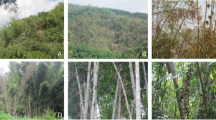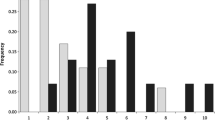Abstract
The mating patterns and reproductive success of the bushy-tailed woodrat (Neotoma cinerea) were investigated over a 3-year period (1992–1994) using DNA fingerprinting. Paternity was determined by genetic analysis of 58 juveniles of known maternity from 35 litters. Analysis of DNA fingerprints revealed that all offspring within a litter were fathered by a single male; the statistical probability of detecting multiple males mating with a female was high, indicating that multiple paternity would have been detected had it occurred. However, individual males did not father more than one litter from a given female either within or between years. At least 75% of females and 57% of males successfully produced offspring each year. The finding that all littermates are first-order relatives may contribute to the high level of female cooperation in this species.
Similar content being viewed by others
Author information
Authors and Affiliations
Additional information
Received: 28 May 1997 / Accepted after revision: 22 March 1998
Rights and permissions
About this article
Cite this article
Topping, M., Millar, J. Mating patterns and reproductive success in the bushy-tailed woodrat (Neotoma cinerea), as revealed by DNA fingerprinting. Behav Ecol Sociobiol 43, 115–124 (1998). https://doi.org/10.1007/s002650050473
Issue Date:
DOI: https://doi.org/10.1007/s002650050473




